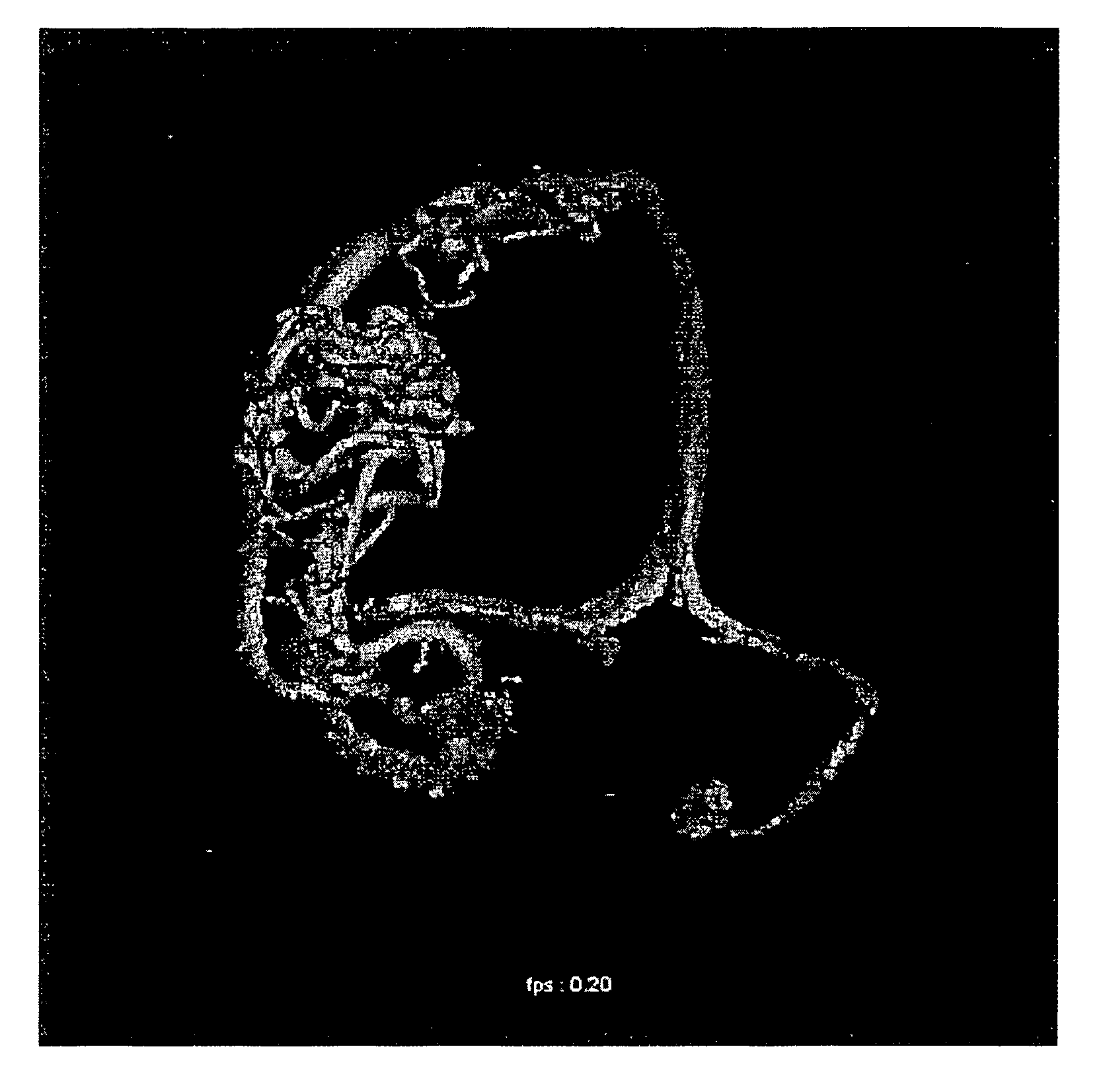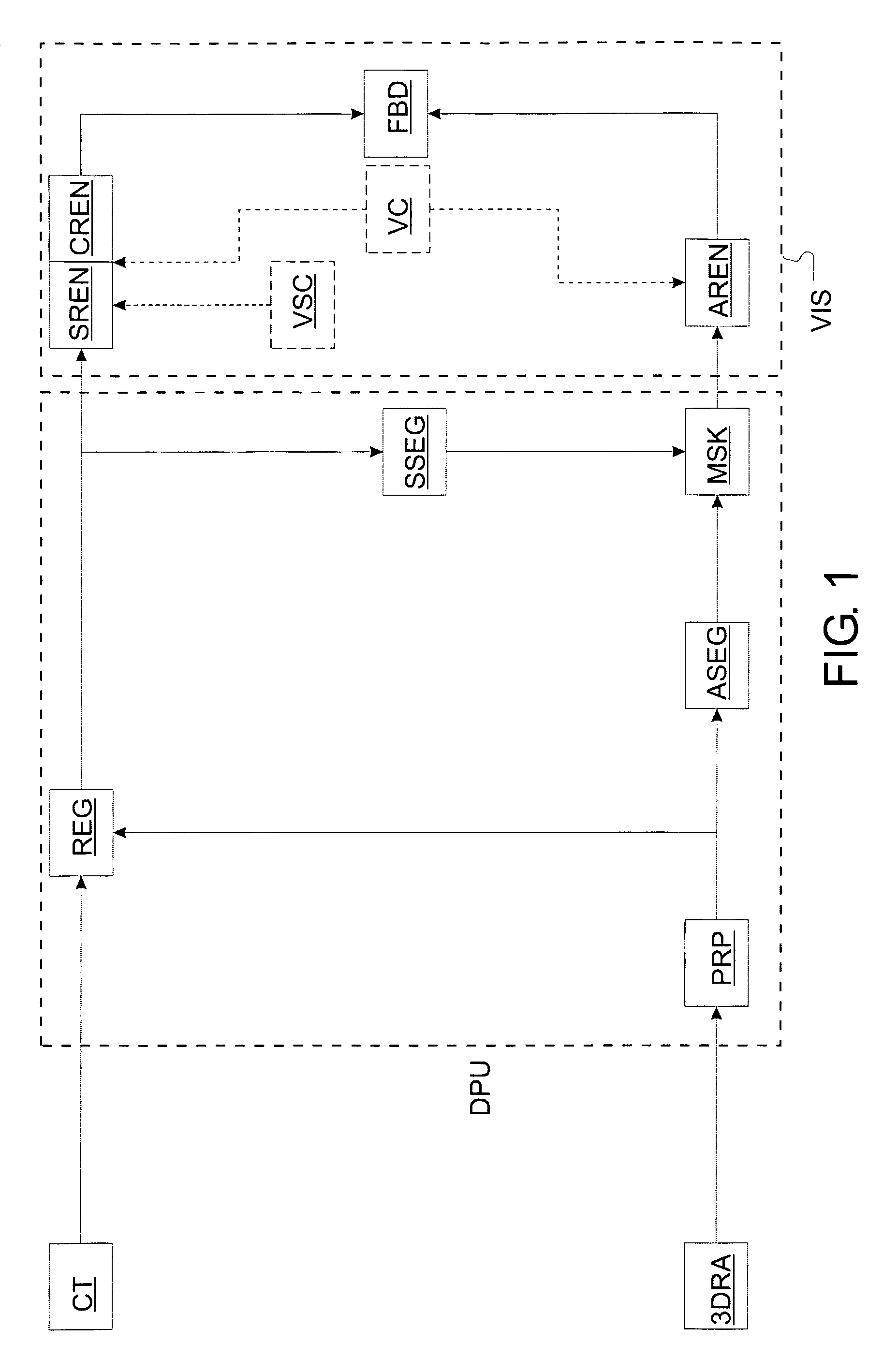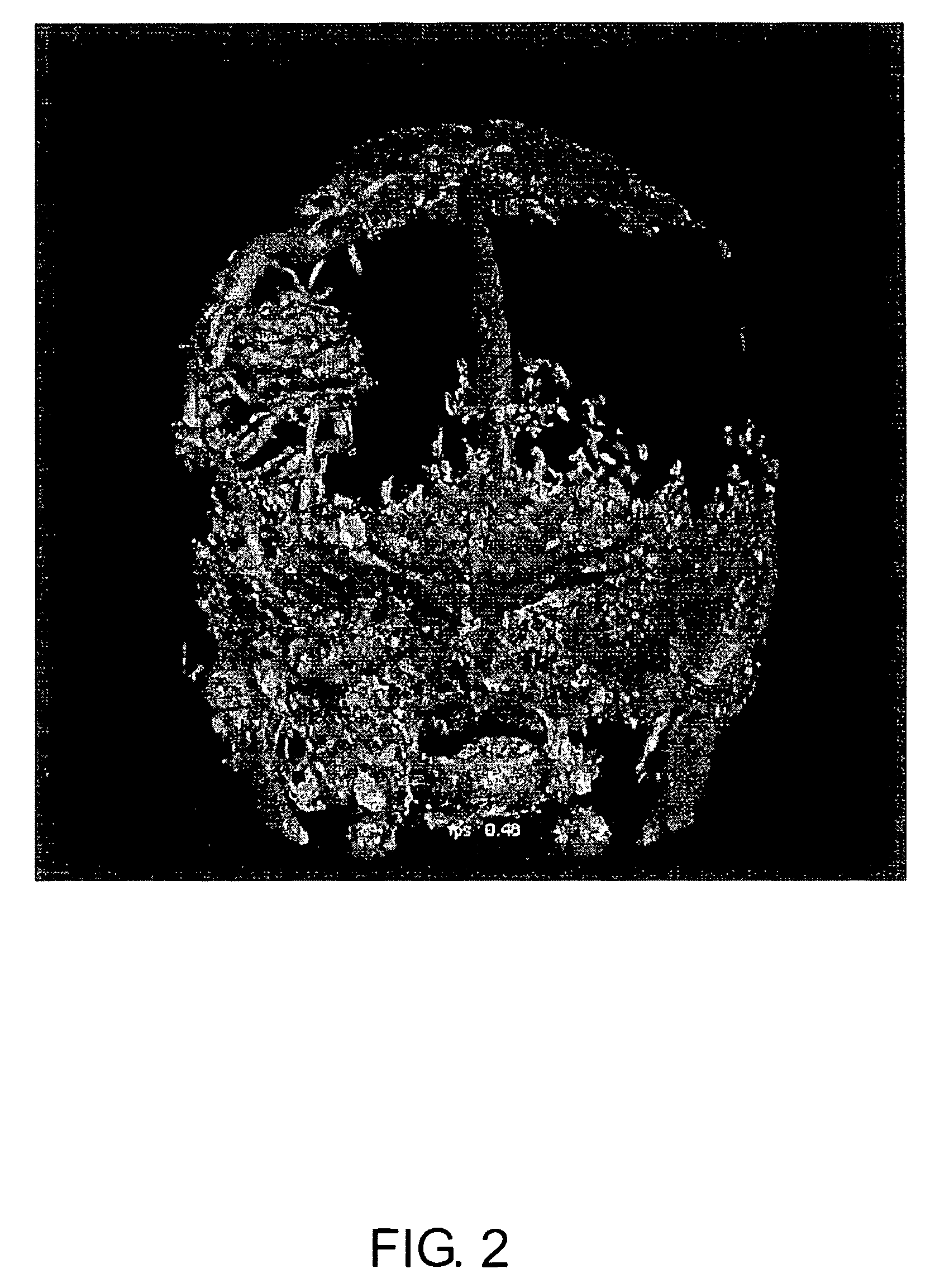Flexible 3D rotational angiography and computed tomography fusion
a 3d rotational angiography and computed tomography technology, applied in the field of imaging systems, can solve the problems of overlapping property distributions of different types, affecting the segmentation of artery/vessel information in the 3d volume, and no absolute correct density value is available, so as to achieve the effect of sacrifying easy visual interpretation and visualizing ample volumes
- Summary
- Abstract
- Description
- Claims
- Application Information
AI Technical Summary
Benefits of technology
Problems solved by technology
Method used
Image
Examples
Embodiment Construction
The present application is a system and method for flexible fusion of two data sets representing three-dimensional densities of a physical properties. According to a preferred embodiment of the present application, two data sets, which both represent the same object, but were generated using different acquisition methods, are combined in such a way, that the advantages of a particular acquisition method can be of use for a data set that was acquired using a different radiological method. For sake of clarity, the present application is explained here with reference to a preferred embodiment employing two diagnostical radiological methods in particular, these two methods being three-dimensional rotational angiography (3DRA) on the one hand and computer tomography (CT) on the other hand. CT is typically used for visualization of low contrast soft tissue such as brain material, while 3DRA is effectively used for visualization of high contrast artery / vessel structures. Since 3DRA and CT ...
PUM
 Login to View More
Login to View More Abstract
Description
Claims
Application Information
 Login to View More
Login to View More - R&D
- Intellectual Property
- Life Sciences
- Materials
- Tech Scout
- Unparalleled Data Quality
- Higher Quality Content
- 60% Fewer Hallucinations
Browse by: Latest US Patents, China's latest patents, Technical Efficacy Thesaurus, Application Domain, Technology Topic, Popular Technical Reports.
© 2025 PatSnap. All rights reserved.Legal|Privacy policy|Modern Slavery Act Transparency Statement|Sitemap|About US| Contact US: help@patsnap.com



